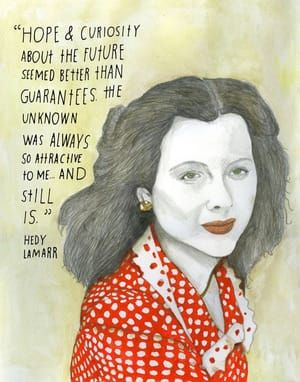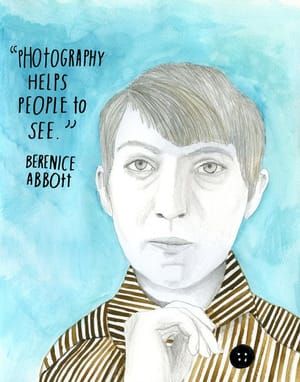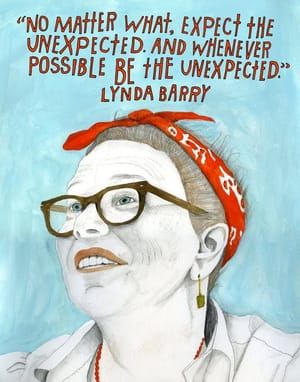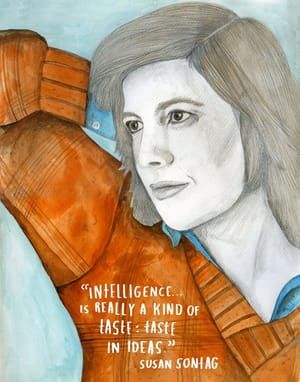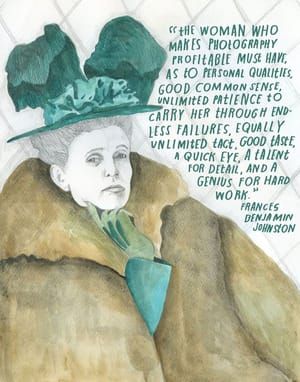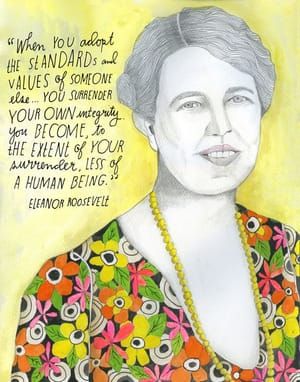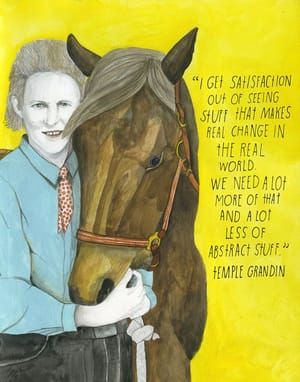

Maya Angelou, 2013
Lisa Congdon
“There’s something, which impels us to show our inner-souls. The more courageous we are, the more we succeed in explaining what we know,” Marguerite Ann Johnson, better-known as Maya Angelou (born April 4, 1928), asserted in her eloquent meditation on why we write. But more than a mere literary device, this ethos of lyrical bravery permeates every aspect of the beloved author’s spirit, from her stirring autobiographies to her resolute civil rights activism to her valorous poetry. Though her most memorable work is autobiographical in nature, it emanates an expansive celebration of the tender resilience of the human spirit, reverberating at the intersection of the deeply personal and the universally resonant.
Far from a beeline to literary success, the trajectory of Angelou’s life treks the uneven topography of fortune and misfortune, steered by that same daring spirit of unflinching conviction. Born into a tumultuous working-class family and abandoned by her father at the age of three, Angelou was sent to live with her grandmother, an unusually prosperous store owner amidst the otherwise impecunious environment of the Great Depression. Angelou was eventually reunited with her mother, Vivian, in what turned out to be a heartbreaking trade-off – at the age of 8, Angelou was raped by Vivian’s boyfriend. Though terrified, she confessed to her brother, who then alerted the rest of the family. The attacker was convicted but jailed for only a day. Mere days after his release, he was murdered – by Angelou’s uncles, according to most speculations.
With the tragic magical thinking that leads abused children to take the weight of the world on their shoulders, young Maya came to believe that her words had killed her abuser and that her voice had the power to destroy. She became mute for nearly five years – an extreme manifestation of the soul-wrenching see-saw of silence and sanity that rocks many victims of sexual abuse – and it was in this verbal interlude that Angelou developed her love of literature, her keen capacity for observation, and her remarkable memory for fact and detail.
Less than a month after her high school graduation, at the age of 17, Angelou gave birth to her son, Clyde. Over the following decade, she spiraled into poverty and cycled through various relationships, cities, and occupations – from a pimp to a prostitute to a line cook – in struggling to survive as a single mother. While performing modern dance with her husband, the Greek electrician and aspiring musician Enistasious (Tosh) Angelos – an interracial marriage in an era that deemed the union radical and worthy of condemnation – she adopted “Maya Angelou” as her professional name upon her managers’ insistence.
Shortly thereafter, Angelou was drawn to the anti-apartheid movement in South Africa and became a champion of civil rights, befriending both Malcolm X and Dr. Martin Luther King, Jr., whose subsequent assassinations only three years apart left Angelou devastated but even more committed to the cause. King’s loss in 1968 threw Angelou into a particularly deep depression. In an effort to cheer her up, her friend James Baldwin took her to a dinner party at legendary cartoonist Jules Feiffer’s home. Taken with the story of Angelou’s childhood, Feiffer’s wife, Judy, urged iconic Random House editor and family friend Robert Loomis to convince Angelou to write a book. In 1969, despite having almost no writing experience, she penned her first autobiography, I Know Why the Caged Bird Sings, which catapulted her into the strata of international literary celebrity.
Over the half-century that followed, Angelou earned her reputation as one of modern history’s most acclaimed and disciplined authors with five more autobiographies, five books of essays, and a number of poetry anthologies, in addition to collaborating on various theater, television, and film projects. The recipient of numerous awards and nearly three dozen honorary doctoral degrees, she is only the second poet in history, after Robert Frost’s famous performance, to recite at a presidential inauguration.
[http://thereconstructionists.org/page/11]
What do Buddhist artist Agnes Martin, Hollywood inventor Hedy Lamarr, and French-Cuban author Anaïs Nin have in common? Their names may not conjure popular recognition, and yet, for Lisa Congdon and Maria Popova, these women represent a particular breed of cultural trailblazer: female, under-appreciated, badass. They are “Reconstructionists,” as the writer-illustrator duo call them – and for the next year, they’ll be celebrated on a blog of the same name. Every Monday for 12 months, The Reconstructionists will debut a hand-painted illustration and short essay highlighting a woman from fields such as art, science, and literature. The subject needn’t be famous, but she will, as Popova, the creator of Brain Pickings, puts it, “have changed the way we define ourselves as a culture." We spoke with Popova, and illustrator Congdon, about the inspiration....
[http://storyboard.tumblr.com/post/41698890843/the-reconstructionists-celebrating-badass-women]
© 2013 Lisa Congdon
Lisa Congdon
artistArthur
coming soon



